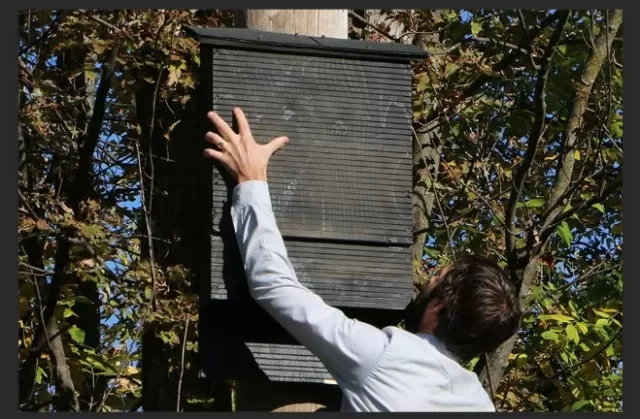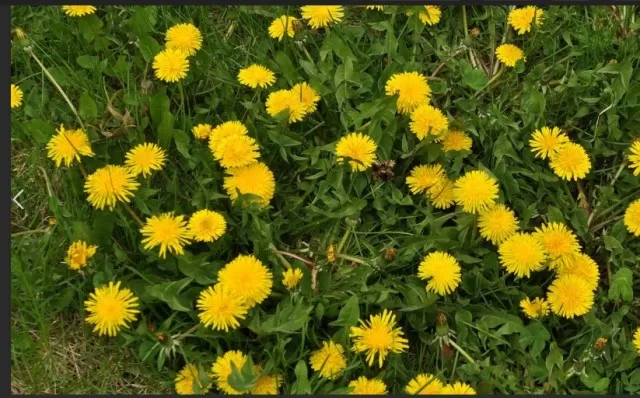Being a Considerate Neighbor to Backyard Wildlife. Creating a welcoming environment for birds, pollinating insects, and other wildlife can not only add a touch of natural beauty to your property but also play a vital role in supporting the ecosystem.
By following these simple tips, you can turn your backyard into a haven that attracts a diverse range of enchanting creatures.By implementing these tips, your backyard will flourish with the sights and sounds of beautiful creatures, enriching your daily life and contributing to the well-being of the local ecosystem. Enjoy the wonders of nature right in your own backyard!
Nurturing an Alluring Outdoor Haven: Embrace the Bounties of Nature in Your Landscape

The art of tending to your landscape can transform a mundane backyard into a thriving sanctuary filled with vibrant life.
Irrespective of whether you possess a sprawling estate or a cozy urban plot, the potential to make your property an integral part of the local ecosystem lies within your grasp. With a few straightforward steps, you can convert your backyard into a bustling wildlife way station, providing refuge and sustenance for various creatures.
As you embark on this journey, you will soon discover that a picturesque yard extends far beyond a pristine lawn.
Dive into the realm of landscaping, where you hold the power to cultivate an inviting atmosphere that not only pleases the eye but also nurtures biodiversity.
By carefully choosing native plants and creating diverse habitats, you can entice an array of birds, butterflies, and other delightful critters to take up residence in your backyard. Transform your landscape into a haven, where the melodious chirping of birds harmonizes with the gentle hum of pollinators, creating a symphony of nature that enlivens your senses.
Beyond the beauty it brings, an ecologically rich landscape serves as a valuable contributor to the local environment.
It can aid in mitigating climate change, improve air and water quality, and promote a healthier ecosystem overall. By embracing sustainable gardening practices and reducing the use of harmful chemicals, you actively contribute to the well-being of your immediate surroundings and beyond.
As you embark on your journey to create a wildlife-friendly landscape, you’ll find that the rewards are abundant.
Witness the joy of observing native species thrive, as they perform their unique roles in the delicate web of life. Experience the satisfaction of knowing that your efforts play a crucial role in preserving biodiversity and safeguarding the natural heritage for future generations.
So, seize the opportunity to nurture an alluring outdoor haven.
Embrace the wonders of nature as you transform your landscape into a sanctuary that beckons both wildlife and humans alike. Cultivate an inviting landscape that celebrates the beauty and resilience of the natural world, and in return, you’ll find yourself immersed in a profound connection with the very essence of life.
Embrace Organic Landscaping: Bid Farewell to Pesticides and Welcome Fireflies Back to Your Yard
The enchanting sight of fireflies illuminating a summer evening seems to have become a rare occurrence.
A possible culprit behind this decline lies in the widespread use of pesticides, which inadvertently harm these harmless beetles. The negative impact is twofold, affecting both the underground development of firefly larvae and the adult bugs that come into contact with pesticide-laden grass or food sources. It’s time to make a change by shifting away from chemical treatments and adopting organic methods that promote a healthier ecosystem.
By choosing organic landscaping practices, you can play a vital role in safeguarding fireflies and other beneficial insects.
Instead of resorting to pesticides, consider embracing manual weed pulling and handpicking pests as effective alternatives. Taking the time to personally tend to your landscape not only reduces the need for harmful chemicals but also fosters a deeper connection with nature.
Embrace the concept of harmony between your yard and the environment, as you eschew the use of pesticides.
Allow your landscape to thrive through natural methods that prioritize the well-being of all living beings, from the tiniest insects to the grandest trees. As you embark on this pesticide-free journey, you may witness the return of fireflies, gracing your evenings once more with their mesmerizing dance of light.
Through the adoption of organic practices, you contribute to the preservation of biodiversity and the restoration of a delicate balance in your ecosystem.
Encourage the presence of beneficial insects like ladybugs, lacewings, and bees, which act as natural pest controllers, keeping harmful insect populations in check without causing harm to other organisms.
Remember, every small step counts.
By putting away the pesticides and embracing organic methods, you create a safe haven for fireflies and other living creatures. Let your yard be a sanctuary where these magical beetles can flourish, adding to the beauty of nature’s symphony that surrounds us.
Together, let’s nurture a landscape that respects the delicate intricacies of life and sets an example for a more sustainable and ecologically conscious future.
Create a Sanctuary for Nature\’s Nighttime Guardians: Install a Bat House for Effective Mosquito Control

Step aside mosquito spray, and welcome nature’s ultimate mosquito hunters – bats! Instead of relying on chemical solutions, consider the eco-friendly and efficient alternative of hanging a bat house in your yard.
These nocturnal mammals can be incredibly beneficial in controlling pesky insect populations, with a single brown bat devouring approximately 1,000 mosquito-size insects every night. By providing a safe haven for bats, you not only contribute to effective mosquito control but also support the conservation of these remarkable and often misunderstood creatures.
Despite their undeserved bad reputation, bats are surprisingly shy and gentle animals.
Unfortunately, their numbers are declining as their natural habitats and food sources diminish. By offering them a bat house, you extend a helping hand in ensuring their survival and thriving presence in your local ecosystem.
Selecting the right location for your bat house is crucial to attract these nocturnal fliers.
Opt for a spot that receives six to eight hours of sunlight each day and is positioned 12 to 20 feet above the ground. You can hang the bat house on a sturdy pole or attach it to the side of your house.
By providing an ideal habitat for bats, you create a mutually beneficial arrangement where they keep the mosquito population in check, and you enjoy peaceful evenings without the nuisance of relentless biting insects.
Beyond the immediate benefits of mosquito control, supporting bats also promotes the overall health of your yard’s ecosystem.
These voracious insect-eaters contribute to a more balanced and harmonious environment, where natural predators help maintain the delicate equilibrium between species.
So, make a difference in your environment and embrace the idea of installing a bat house.
Watch as these incredible creatures take to the skies, skillfully capturing insects in their nightly feeding frenzy. Your bat house becomes a sanctuary for nature’s nighttime guardians, and you play a vital role in conserving their existence while reaping the rewards of a mosquito-free outdoor haven.
Join the efforts to protect these fascinating animals, and in return, witness the magic they bring to your nights, filling the air with their graceful flight and invaluable service to the ecosystem.
Create a Haven for Butterflies: Cultivate Host Plants to Nourish Every Stage of Their Life Cycle
While nectar plants like buddleia, coneflower, and verbena provide essential sustenance for adult butterflies, their life cycle demands more than just nectar.
To support these graceful insects through all stages of their existence, it’s crucial to grow specific host plants on which they can lay their eggs. Butterfly larvae, known as caterpillars, have distinct culinary preferences, often feeding on only one or two plant species. By incorporating these host plants into your landscape, you can encourage butterflies to lay their eggs, ensuring the continuity of their species.
A Key example is the monarch butterfly, which solely lays its eggs on milkweed plants.
By including milkweed in your garden, you play an integral role in supporting the survival of this majestic species. Similarly, the black swallowtail seeks out specific plants like dill, carrot, fennel, and parsley for its eggs.
By growing these host plants, you provide vital resources for the development of caterpillars and, ultimately, the transformation into beautiful butterflies.
Incorporating host plants into your landscape not only benefits butterflies but also adds diversity and vibrancy to your garden.
You can create a harmonious balance by growing both nectar plants and host plants, attracting adult butterflies with nectar while fostering the next generation through the availability of suitable egg-laying sites.
For plants that are coveted by both butterflies and humans, consider planting a few for each.
This way, you can enjoy the beauty of the butterflies’ chosen hosts while still having some of your favorite vegetables or herbs for personal use. It’s a win-win situation that supports biodiversity and adds an enchanting dimension to your gardening experience.
As you cultivate these host plants, you’ll witness the fascinating metamorphosis of butterflies right in your backyard.
Observe the delicate dance of life as caterpillars transform into chrysalides and emerge as breathtaking butterflies. Your garden becomes a haven, nurturing and celebrating the wonder of nature’s cycle.
So, make a difference in the lives of butterflies by growing host plants.
Embrace the beauty of each stage in their life cycle and cherish the sight of these gentle creatures gracing your landscape. By providing the necessary resources for their survival, you play a crucial role in ensuring the continued presence of these enchanting insects for generations to come.
Embrace the Yellow Blooms: Let Dandelions Nourish Early Pollinators

In the pursuit of a flawless lawn, dandelions often find themselves on the receiving end of disdain from lawn perfectionists.
Yet, these determined weeds hold immense value for early-emerging pollinators, such as bees and other beneficial insects. As the first nectar source available in the suburban landscape, dandelions play a crucial role in sustaining these important pollinators until more nutritious blossoms emerge.
So, next time you spot those sunny yellow flowers, consider resisting the urge to pull them all out.
By leaving the dandelions untouched for a little while longer, you provide essential nourishment to the early pollinators, allowing them to thrive and contribute to the vitality of your garden ecosystem.
The vibrant yellow blooms serve as a lifeline for these creatures, ensuring they have sustenance during the early stages of spring when other flowers might still be catching up.
Of course, it’s understandable that you might wish to maintain a well-manicured lawn.
However, for the sake of pollinators, consider letting a few dandelions flourish until the rest of your spring flowers come into full bloom. This small act of patience can have a significant positive impact on the local pollinator population.
If the sight of dandelions becomes too much to bear, there’s a playful alternative.
You can pluck a fluffy dandelion seed head, make a wish, and blow the seeds into your neighbor’s yard (with their permission, of course!). This way, you spread the seeds while ensuring your lawn remains dandelion-free.
By striking a balance between your desire for a pristine lawn and the needs of pollinators, you contribute to a healthier and more biodiverse environment.
Appreciate the value of dandelions as an early source of nourishment for important pollinators, and let these cheerful yellow blooms coexist in your landscape. Embrace the beauty they bring to your garden while supporting the essential work of bees and other pollinating insects that play a critical role in the intricate web of life.
*The information is for reference only.